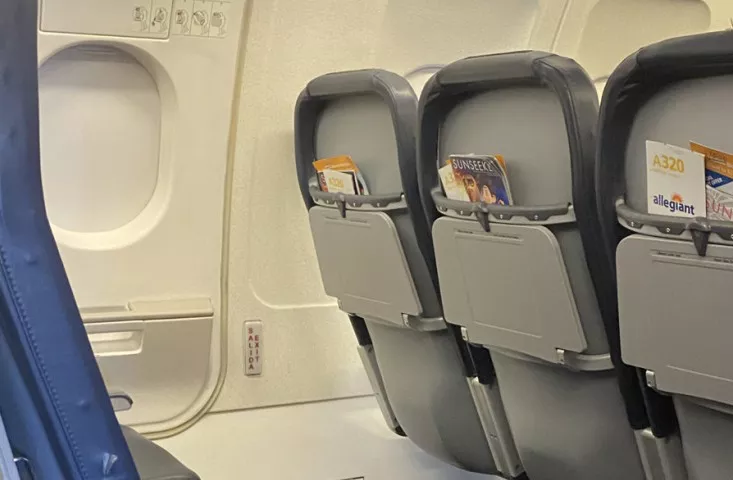Allegiant Air is a prominent American ultra-low-cost airline known for providing affordable travel options across numerous destinations. Understanding where Allegiant Air is based offers insights into its operational strategies and the regions it serves. This article delves into the airline’s headquarters, its strategic locations, and how these contribute to its unique business model.
Where Is Allegiant Airlines Based?
Location and Facilities
Allegiant Air is headquartered in Summerlin, Nevada, a suburb of Las Vegas. The corporate office is situated at 1201 North Town Center Drive, Las Vegas, NV 89144. This central location allows the airline to efficiently manage its operations and serve a diverse range of destinations.
Contact Information
- Address: 1201 North Town Center Drive, Las Vegas, NV 89144, USA
- Phone: +1 702-505-8888
- Email: [email protected]
- Website: www.allegiantair.com
Operational Bases and Hubs
While Las Vegas serves as the corporate headquarters, Allegiant Air operates multiple bases and hubs across the United States to optimize its flight operations. These locations are strategically chosen to enhance route efficiency and cater to leisure travelers.
Major Operational Bases
Allegiant Air maintains operational bases in several cities, including:
- Las Vegas, Nevada
- Orlando/Sanford, Florida
- St. Petersburg/Clearwater, Florida
- Phoenix/Mesa, Arizona
- Nashville, Tennessee
- Indianapolis, Indiana
- Grand Rapids, Michigan
- Fort Lauderdale, Florida
- Des Moines, Iowa
- Appleton, Wisconsin
- Flint, Michigan
- Asheville, North Carolina
- Bellingham, Washington
- Cincinnati, Ohio
- Charlotte/Concord, North Carolina
- Destin/Fort Walton Beach, Florida
- Provo, Utah
- Punta Gorda, Florida
- Sarasota, Florida
- Savannah, Georgia
- St. Petersburg/Clearwater, Florida
These bases are essential for Allegiant’s operations, allowing the airline to offer direct flights to various leisure destinations.
Business Model and Strategic Focus
Allegiant Air operates on an ultra-low-cost carrier model, focusing on providing affordable travel options primarily for leisure travelers. The airline emphasizes point-to-point service, connecting smaller, underserved airports to popular vacation spots. This strategy reduces operational costs and offers passengers convenient travel alternatives.
Fleet and Destinations
As of January 2025, Allegiant Air’s fleet comprises 128 aircraft, primarily consisting of Airbus A319, A320, and Boeing 737 MAX models. The airline serves 122 destinations across the United States, with a network designed to cater to the needs of leisure travelers seeking affordable and convenient flight options.
Fleet Details
- Airbus A319-100: 34 aircraft with a seating capacity of 156 passengers.
- Airbus A320-200: 12 aircraft with a seating capacity of 177 to 186 passengers.
- Boeing 737 MAX 7: 24 aircraft on order, with deliveries expected to begin in 2024.
- Boeing 737 MAX 200: 4 aircraft with a seating capacity of 190 passengers.
Destinations
Allegiant Air serves 122 destinations within the United States, primarily focusing on regional airports that are not major hubs for other carriers. The airline selects routes based on detailed analyses of costs and expected revenues, adjusting services according to demand.
Historical Background
Founded in 1997, Allegiant Air has undergone significant transformations to become a leading ultra-low-cost carrier. Initially based in Fresno, California, the company relocated to Summerlin, Nevada, a suburb of Las Vegas, in 2001.
Over the years, Allegiant has shifted its fleet composition from predominantly McDonnell Douglas MD-80 series aircraft to an all-Airbus and Boeing jet fleet by late 2018. This transition aimed to enhance operational efficiency and passenger comfort.
Corporate Structure
Allegiant Air is a subsidiary of Allegiant Travel Company, an American travel and hospitality firm headquartered in Summerlin, Nevada. The company also owns Sunseeker Resorts, expanding its portfolio in the leisure travel sector.
Conclusion
Allegiant Air’s headquarters in Summerlin, Nevada, serve as the central hub for its operations, supporting a network of bases and hubs across the country. This strategic positioning enables the airline to effectively serve its target market of leisure travelers, offering a range of destinations and services tailored to their needs. Understanding Allegiant’s headquarters and operational structure provides valuable insights into its business strategies and commitment to providing affordable travel options.

